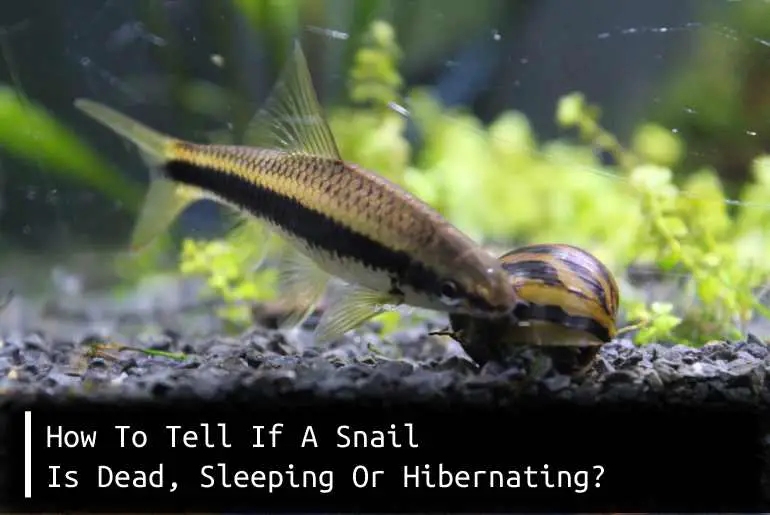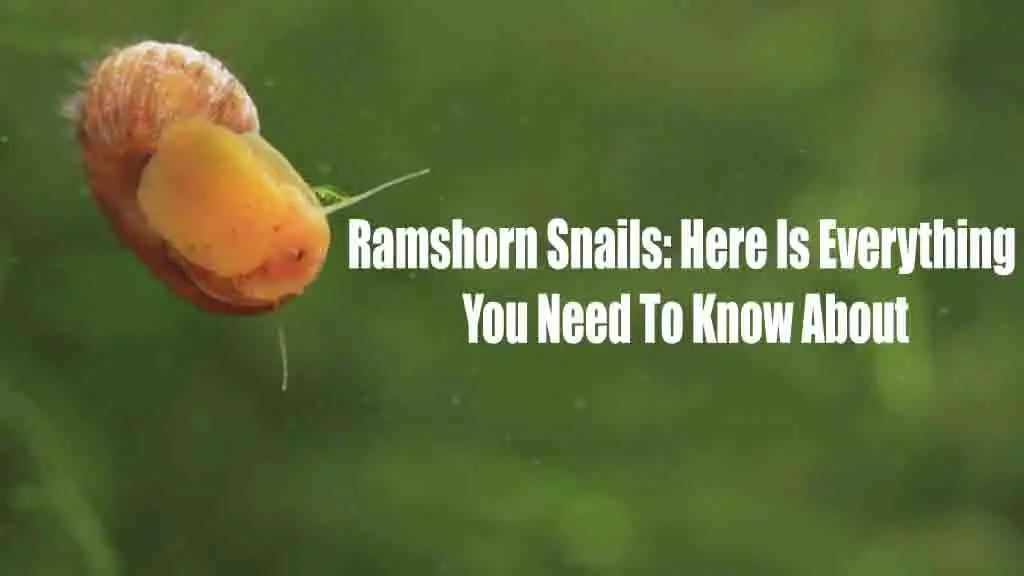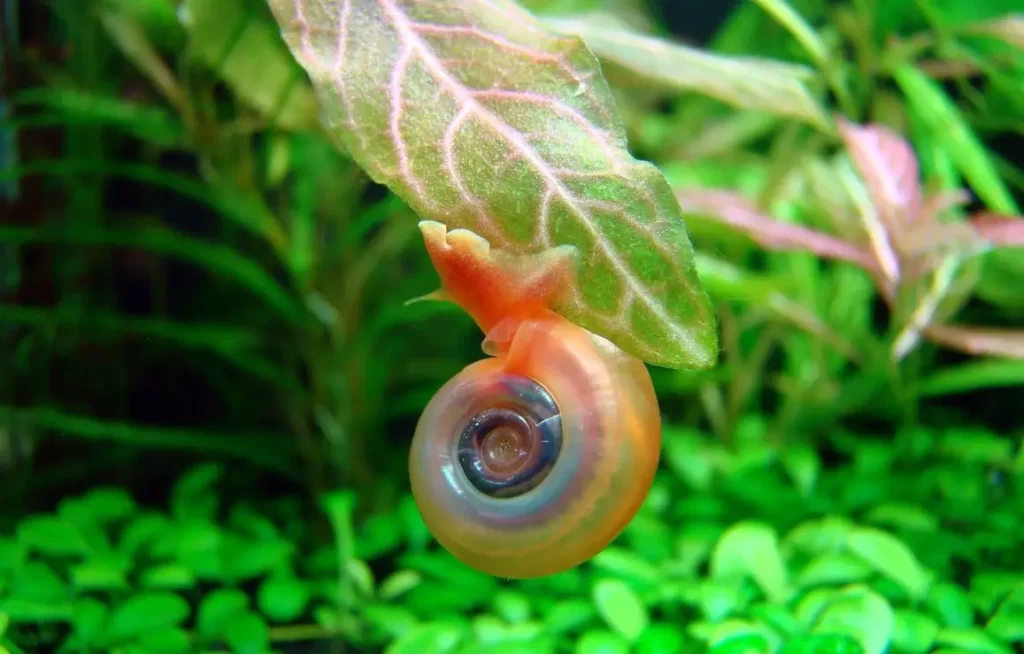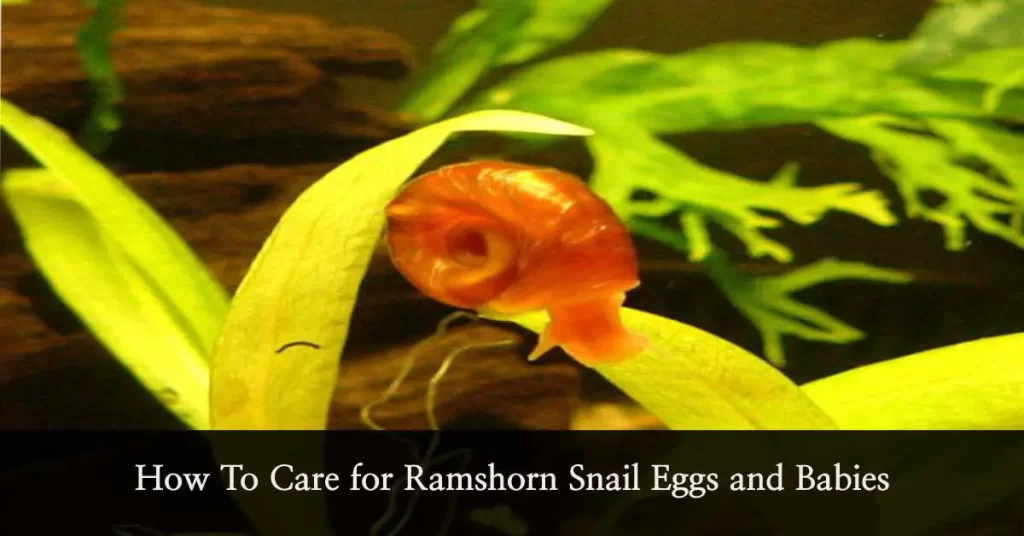Snails are one of the slowest animals on the planet, which spend most of their time either eating algae or taking extended naps. They are commonly kept as pets or in aquariums. Also, snails are useful cleaning tools since they prevent algae growth in your aquarium. But can you If A Snail Is Dead, Sleeping, Or Hibernating?
Sometimes, while monitoring your small pet’s behavior, you may notice that your pet is inactive or hiding in caves and wonder if it is doing fine. This may concern you as questions arise in your mind, such as why my snail is not moving. Is it dead, or is it just sleeping? Or make you wonder if it is hibernating.
This article will help you to figure out the behavior of a snail, whether it is dead, sleeping, or hibernating.
How To Tell If My Snail Is Dead, Sleeping, Or Hibernating?
Given how slowly they move, snails make it difficult to determine whether they are sleeping or dying. Because of the inactive behavior of a snail, it’s a bit tricky to answer by just observing the situation.
One of the proper solutions for figuring out the snail’s nature is by smelling. The only effective method for identifying when a snail has expired or is sleeping is by smell. If you notice a nasty odor arising from the body of your snail, then you have a sluggish snail. Change the water in the tank if you are still unsure. And if the unpleasant odor persists even after changing the water, you have a dead snail in your aquarium.
Snails may prefer to doze off for days. These types of hibernation are common in snails. Additionally, they sleep throughout the day and travel around at night. But if your snail doesn’t move for three days, you should investigate deeper.
How Long Do Snails Live For?
Snails raised in captivity live longer than those nurtured in the wild. In the outdoors, there is a large risk that you will run into a predator. Because of this, wild snails live shorter lives than the ones you keep in a tank. If they are able to survive in an appropriate habitat, snails can live for approximately three to ten years.
Snails have a slower metabolism, which contributes to their longer lifespan. The tank warmers will, however, have a faster rate of metabolism when placed at a greater temperature. Maintaining a high temperature may speed up your snail’s metabolism and increase its aging process. As a result, the snail will die considerably sooner than you expect.
A clean tank with freshwater is also important for a snail’s longevity. Salty, chlorinated water is bad for snails’ bodies. To keep your snail healthy inside a tank, make sure to dechlorinate the water.
How Can You Tell If A Snail Is Sleeping?
Snails are solitary animals. They prefer to sleep for the majority of the time. Vast periods of time go by during which snails do not move. According to studies, snails can sleep for up to 24 hours.
Snails in the aquarium will look for their preferred sleeping location and occupy it. They will go to the same place to sleep whenever they need to take a nap. Therefore, if your snail sits in the same area for a few days without moving, it is likely that they are sleeping.
How Much Time Do Snails Nap?
Snails can sleep at any time and in any location. They are renowned for their lengthy naps in addition to their extraordinary algae-eating abilities. Snails can sleep for two to three days in a row depending on their breed, the climate, the seasons, and their tank’s circumstances.
Additionally, it has been noted that snails can sleep for up to seven brief intervals in an 18-hour period before engaging in 30 hours of activity.
Causes Of Your Snail’s Possible Inactivity
Here are a few characteristics you can look for in your pet snail to determine whether it is active or not.
Stress
When trapped in challenging circumstances, snails may become immobile for several days. For instance, garden snails will often coil up in their shells if they are exposed to temperatures that are too high for them to tolerate.
Other species, like pond snails, lack this protective trait and may not be moving as a result of ongoing stress. Additionally, when the water quality worsens, water snails may experience stress in their habitat aquarium.
High Concentration Of Nitrites And Ammonia
How active your snail is in the tank is directly influenced by the concentrations of ammonia or nitrites. Both of these substances are poisonous to your snail and impair its mobility. If the concentration is greater than 20 mg/L, they can even kill snails.
Sleep
As previously mentioned, snails may sleep for extended periods under the correct circumstances. Due to their inconsistent sleeping patterns, it is simple for you to miss their active times and believe they haven’t moved for a few days. If your snail is not crawling for two to three days, you shouldn’t assume it is dead right away.
Lack Of Food
Your snail may be starving if it moves only occasionally. It may become slow or stuck at a location because of a shortage of food, which also causes its energy levels to drop. They receive their energy for movement from the food they consume, just like other living things.
Moreover, your snails will eventually cease moving if you don’t feed them properly. Since snails can also eat the leftover food of other organisms, there are also good odds that this will occur in an aquarium free of fish, plants, or algae.
Improper Water In The Tank
Snails are quite particular about the aquarium’s water quality. Even the smallest changes in pH, temperature, or water hardness trigger a response from them. Although snails are better able to detect bad water quality than fish, you shouldn’t keep them in unsanitary aquarium circumstances.
If the tank’s water is of poor quality, your snail may get sick and lose some of its movement as a result. Your snail will eventually cease moving permanently if the water quality doesn’t change over an extended period of time.
Hibernation
Snails hibernate in the wild throughout the colder months, which is entirely normal. In an aquarium, it indicates that something is wrong with the environment.
Snails will likely hibernate if there isn’t enough food available. They hibernate and wait years for the algae to grow when there is a food shortage. This enables them to indulge in a feeding frenzy when they finally wake up.
If the temperature in the water tank is pretty consistent throughout the year, water snails might not need to hibernate.
Moreover, if the water temperature remains too low or if they are not receiving enough food, mystery snails may enter a brief state of hibernation.
How To Find Your Snail Is Dead Or It Is Just Sleeping?
Instead of just glancing at your snail, it is preferable to inspect it physically. These characteristics will enable you to determine whether your creature is still breathing or not.
Smell The Snail
You might not always be able to observe your snail’s responses. It may make you feel uneasy and make you question if it’s still alive. At that point, take up your snail and give it a sniff. The shock may come when you realize your adorable pet is no longer there after your nose picks up a nasty aroma.
Size Variations Between The Snails
The body of a snail gets compressed as it dies. When you realize your pet hasn’t moved in a long time and want to check on it, you’ll feel the shell of a snail. If the shell appears to be completely weightless, the snail is presumed to be already dead.
Examine The Snail’s Shell
Because of their sensitive shells, snails typically react when they are handled. If the snail doesn’t respond when contacted, you ought to be cautious and check it out to see if there’s a problem.
Do Snails Go Into Hibernation?
Yes, snails hibernate too. Snails go for hibernation when there is a deficit of food. Due to the lack of food sources, snails that are hibernating during this time consume less food.
If the water temperature remains too low, mystery snails may enter a brief period of hibernation.
Whereas if the temperature in the water tank is generally consistent throughout the year, water snails might not need to hibernate.
How Can You Force Your Pet Snail To Hibernate?
Lowering the temperature of the water in a tank may show a good sign that your pet might go into hibernation.
Additionally, pond snails have the ability to dramatically slow their metabolism, allowing them to hibernate for longer periods of time. According to reports, their hibernation lasts for 3 years.
What Will Happen If You Wake Up The Snail During Hibernation?
Sleep and hibernation are essential for the survival of snails. Hibernating demands a lot of energy, so it’s not a good idea to awaken a snail while it’s asleep.
How Can You Keep Your Pet Healthy?
Typically, people keep multiple snails in their aquariums. Calcium is required for snails to produce their shells. Cuttlebone(A tough, fragile inner surface (an internal shell), also referred to as cuttlefish bone), which is readily accessible in most pet stores, can be used as a calcium supplement.
Cuttlebone should be briefly boiled in a water bath and then allowed to cool. After that, please put it in the aquarium. It will effortlessly sink. By including goldfish vacation blocks, you may supplement calcium in a fantastic way. These building bricks are made to supply meals for a longer amount of time. As the calcium gradually dissolves, the meal is revealed. Additionally, your snail needs calcium supplements and clean water with appropriate filtration.
FAQ
Do Dead Snails Float In The Water?
Before assuming that the pet snail has passed, make sure you look for additional clues. Although they can sink as well, dead snails typically float.
Dead snails: Do They Stick?
Nope, a dead snail won’t adhere to the aquarium’s glass, rocks, or other objects. Don’t be alarmed if you find a snail attached to an object but not moving; they are probably just resting.
How Do You Awaken A Snail That Is Hibernating?
The snails would hibernate by entering their shells and developing a thick layer over the opening if it becomes too cold. By maintaining the warmth and delicately putting the shells under lukewarm water, you can get them to wake up. The snails will start actively if they are certain that the weather will continue to be warm.
How Long Do Snails Stay Awake?
Snails will slumber for a few hours at a time, periodically. But after a nap, they typically stay awake for about 30 hours. Even a few people you know can have a similar sleeping schedule. In general, snails are not very aware of the day-night cycles.
Conclusion
Finding that your snail has been immobile for several days can be confusing. It would be helpful if you realized that snails frequently engage in prolonged periods of slumber. They aestivate in the summertime and hibernate in the winter.
You can now enjoy seeing snails in their natural environment because you necessarily know them if they are asleep, dead, or hibernating. Finally, they have weird sleeping patterns, which will cause you to ponder about their other odd behaviors.






